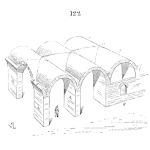
Give me a place to stand on, and I will move the Earth.
Archimedes
Its known HALT is an effective way to find the weaknesses in your product during the reliability improvement program. In doing so, we view HALT as a qualitative test only. We cannot define the reliability and lifetime of the product from its results. So, unfortunately, we cannot use HALT for purposes of Type Certification, confirm the lifetime of Critical Parts, predict the warranty and maintenance costs, which are required, for example, for aviation.
If we could combine the effectiveness of HALT (high acceleration of testing) with the benefits of quantitative testing, we would get a very powerful tool for the Reliability Demonstration and the Reliability Development of the new products.













